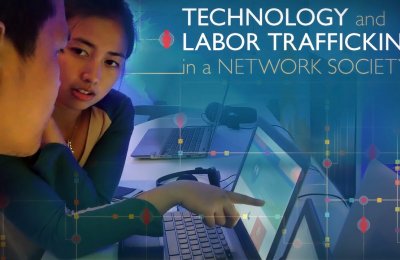By Catherine Donahoe
Student Writer
CEO of DailyMe.com Eduardo Hauser (pictured) led a lively discussion with a standing-room-only audience of faculty and students at the Feb.8 M{2e} event titled “Changing relationships between news providers and their audience” at USC Annenberg.
Hauser visited as part of this semester’s M{2e} -- Media, Economics and Entrepreneurship -- speaker series. M{2e} is a USC Annenberg initiative designed to spark innovation in media industries by increasing understanding of how economics impact communication and journalism. (Hauser's presentation is available here, and video here.)
In the event, moderated by journalism professor Gabriel Kahn, Hauser discussed the way news works today by utilizing six keywords: development, discovery, data, delivery, devices, and dough.
Hauser talked about changing relationships between news providers and their audiences, and said that personalization is the new frontier. He quoted top executives at Google and Facebook who say that news personalization is important for the future of news.
Hauser discussed different tools for story development and noted the importance of development in the news domain today. “In eight years, the amount of data that is stored on the Web has grown 53 times,” he said.
He credited that growth to easy-to-use sites such as Blogger and YouTube.
“Those sites make it easy to pour content on the Web,” he said. “Blogger takes a lot of credit for content flowing on the Web on a daily basis.”
Hauser said that development tools continue to come online: some that we know already, such as Facebook, and others such as Storify in which users can create content via a “story strip.”
The importance of the discovery aspect is vital, he said, because nobody has time to sift through millions of sites for specific information.
Hauser discussed different types of the discovery process, such as editorial discovery, which consists of the old model of an editorial pyramid with management on top and reporters on the bottom. Today, there is algorithmic discovery.
“Now, humans are out of the equation,” he said. “No one decides what is at the top of the Google search, the page rank gives an algorithm on the importance of the page.”
He said deciding the importance of the page uses many different factors: the quality of the source, the length and relevance of the story, and the number of inbound links it receives. Everything is aggregated together as an algorithm to decide the importance of the page.
“Search was only the beginning,” he added.
Hauser also discussed how different organizations use algorithms to show content to the user. Amazon.com employees can allow users to correct the algorithm by giving feedback on what they want to see on their page. He mentioned how different news sites such as CNN and The New York Times have personalized news pages for each user. Hauser brought his own personalized news site, DailyMe.com, into the equation.
“The homepage is based on the profile the system has for you,” he said.
Many of the pages are personalized, following Amazon's method of allowing users to give feedback on what they want to see on their personalized news site.
When discussing delivery, he mentioned radio and TV as constrained, government-approved devices, as opposed to the Internet.
New devices, such as iPads, are important to know how to use and news organizations who understand the power of the interface can be successful. However, while certain daily news sites on iPads and other similar devices may be great, they are still competing with 2 billion other applications on that device. Devices are a dominant force, he said.
To conclude his discussion, Hauser discussed how news organizations can make money in these new news models. He presented a model showing how traffic, engagement, monetization, and revenue connect.
“Traffic is the most important,” he said. From links, to social media, to home page visits, to loyal visitors; it all adds up to site traffic.
Hauser ended his comprehensive discussion with an infographic that asks the question on all journalists’ minds in the digital age. What model will bring it all together and allow the participants to make more money?
Hauser's presentation
M{2e} Speaker Series
What do you think? Join the conversation on our Facebook page .









